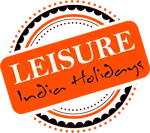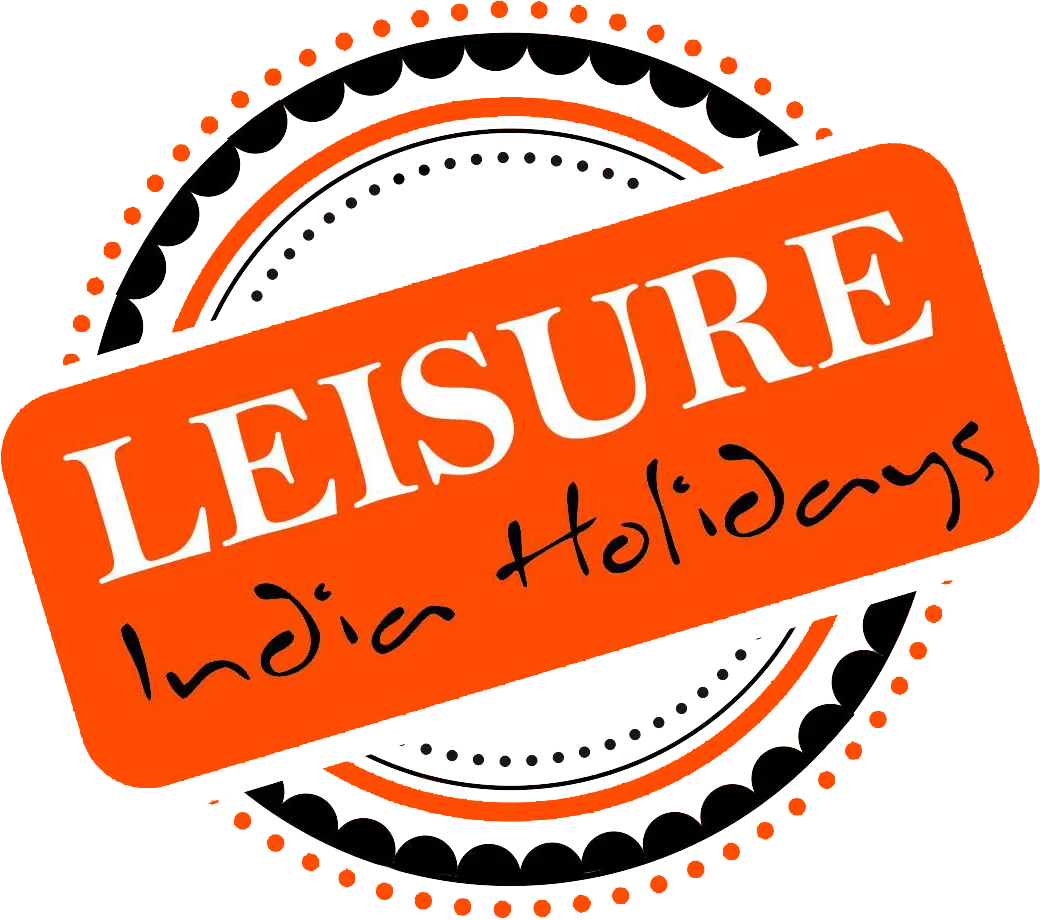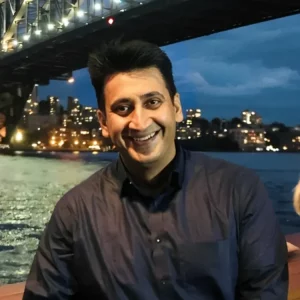India is a country that is divided among various provinces, cultures, and languages but united by its festivals. Each state of India celebrates at least one festival from where the reason to celebrate might have originated historically. Being a part of the festivals in India brings you closer to understanding the rich tradition that they have been following for generations.
India is the only country that has numerous festivals based on its religion, Community, and state, and all the festivals in India are celebrated with so much excitement and energy, like every day is a new celebration in India. You will enjoy every part of India during your festive excursion.
To give you a fair idea about India’s Festivals in 2025, we have provided you with an essential piece of Content that will provide you with a bit of brief information about the Festivals in India. You can feel even more blessed by visiting the dhams, check our Chardham Yatra by Helicopter tour or Do Dham Yatra by Helicopter for more details.
Festivals of India Calendar for 2025
Before diving into the list of various festivals in India, let’s glance at the list of religious festivals in India, state-wise and national festivals of India that are celebrated with lots of excitement and happiness. Plan your trip around these festivals to experience the Vibrant Culture of India.
| Month | Date in 2024 | Festival |
|---|---|---|
| January | (Date Note Confirmed Yet) | Hampi Festival |
| January | 13th January | Lohri |
| January | 15th January | Makar Sankranti |
| January | Begins on 15th January and ends on 18th January | Pongal |
| January | Begins on 15th January and ends on 21 February | Kumbh Mela |
| January | 26th January | Republic Day |
| January | 29th January | Basant Panchami |
| February | 21st February | Maha Shivratri |
| February | Begins on 10th February and ends on 13th February | Carnival in Goa |
| February | Begins on 10th February and ends on 12th February | Losar |
| March | Begins on 24th March | Holi |
| March | Begins on 9th March and ends on 17th April | Vasant Chaitra Navratri |
| March | 9th April | Ugadi |
| March | 9th April | Gudi Padwa |
| March | Begins on 27th March and ends on 29th March | Mewar |
| April | 21st April | Mahavir Jayanti |
| April | 31st March | Easter |
| April | 13th April | Baisakhi |
| April | It begins on 14th April and ends on 20th April | Bihu |
| April | 9th April to 10th April | Eid Ul Fitr |
| April | 19th April | Thrissur Pooram |
| May | 23rd May | Buddha Jayanti |
| June | 16th to 17th June | Hemis |
| June | 7th July 2024 | Rath Yatra Orissa |
| August | 7th August | Teej Festival |
| August | 19th August | Raksha Bandhan |
| August | 15th August | Independence Day |
| August | 26th August | Janmashtmi |
| August | Begins on 5th September to 17th September | Onam |
| September | 6th September | Ganesh Chaturthi |
| September or October | Begins on 17th October and ends on 25th October | 17th September to 2nd October |
| October | Begins on 9th October to 13th October | Durga Puja |
| October | 12th October | Dussehra |
| November | 2nd November | Govardhan Puja |
| November | It begins on 9th November to 15th November | Camel Festival |
| November | 7th to 8th November | Chhath Puja |
| November | 1st November | Diwali |
| November | 15th November | Gurpurab |
| December | Begins on 1st December and ends on 10th December | Hornbill Festival |
| December | 25th December | Christmas |
8 Most Important and Must-Visit Festivals in India 2025
Here is the list of the most popular festivals in India list that you must attend during your trip to India:-
- Diwali – 20th October (Monday)
- Makar Sankranti – 14th January (Tuesday)
- Holi – 14th March (Friday)
- Ganeshotsav – 27th August (Wednesday)
- Navratri and Mahalaya – September 22nd to 1st October (Wednesday)
- Lohri – 13th January (Monday)
- Pongal – 14th January to 17th January (Friday)
- Janmashtami – 16th August (Saturday)
1. Diwali – 20th October 2025
Diwali is among the most popular festivals in India. Diwali is the festival of lights, which is celebrated all over India and among Indians around the world. This Indian festival celebrates the victory of Lord Ram over Ravana as he returns to Ayodhya after 14 years of exile in the forest. Diwali is also celebrated by worshipping Goddess Laxmi, the Goddess of riches. Indians light lamps and candles in their houses in order to light up their spirituality and fight against evil, the darkness from within. This festival lasts for 4 days, and the third day is the most important one. Here, people burn crackers, worship Goddess Laxmi, visit family and friends and draw beautiful rangoli with colours and flowers.
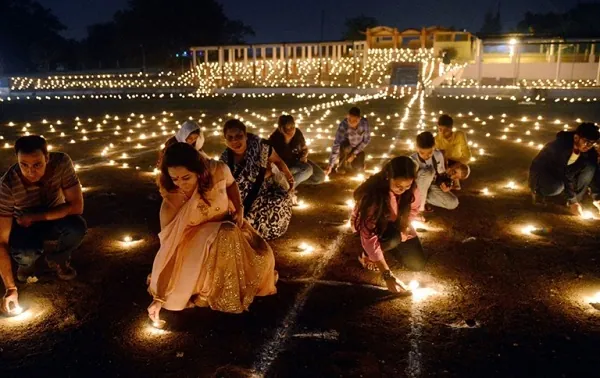
Significance: This Festival marks the homecoming of Lord Rama along with his wife Sita and brother Lakshman after the long exile of 14 years.
How it is celebrated: Home decorated with fancy nights, clay lamps, and candles. Colourful and bustling in markets, they light fireworks and crackers, eat sweets, and visit relatives.
Historic Origin: According to the Hindu lunisolar calendar, the darkest new moon night of Kartik month corresponds to mid-October to mid-November as per the Gregorian Calendar.
Where it is Celebrated: Celebrated all over the Country.
2. Makar Sankranti – 14th January 2025
This festival is celebrated with different names across India, for example, Pongal in South India, Lohri in Punjab and Haryana, Bihu in Assam and Khichdi Festival in Bihar. This festival signifies the end of darkness and the beginning of new chapters in everyone’s life.
Makar Sankranti is predominantly celebrated in Gujarat, which is also known as the famous kite festival in India. People gather to fly kites that relate to the emotional state of brotherhood and happiness. There are kite flying competitions conducted, which bring people together from different areas of life and culture. In households, women prepare sweets made out of Til (sesame seeds) with sugar or Jaggery and Farsan and worship the Sun God.

Significance: The Festival of Makar Sankranti is celebrated to mark the beginning of the agricultural cycle and the end of the winter season.
How it is Celebrated: The Festival is celebrated by kites flying and preparing sweets made with Sesame seeds (Teel) and a sugar base such as Jaggery.
Historic Origin: Marks an end to the winter solace, a Celebration to welcome longer days and a Transition from a negative to a positive time after Uttarayan.
Where it is Celebrated: It is celebrated in all parts of the country, but the best place to celebrate this colourful Festival is in North India.
3. Holi – 14th March 2025
In India, the Holi festival is a celebration of love, colour, and loads of fun. There is a vast history behind the Holi festival of India. This festival is celebrated by burning Holika ( Bonfire ) night prior to the Holi evening. Holi in India is celebrated as a victory for Prahlad, son of Hiranyakashyap, over Holika ( sister of Hiranyakashyap), who jumped with him in the holy fire on the demand of her brother Hiranyakashyap as she was blessed to enter blazing fire without damaging herself. Hiranyakashyap was a cruel king and wanted to be worshipped by his kingdom as a god, to which his son Prahlad revolted and worshipped Lord Narayan instead. Prahlad returned from the fire without any harm, whereas Holika was burnt to death. That’s where Holi gets its significance of celebrating good over evil. The other story that relates to Holi is Lord Krishna used to apply colours to his beloved Radha while they played, and in return, Radha and her friends used to beat him and his friends with sticks, which started as the famous Lathmar Holi Tradition, which is one of the various types of Holi celebration in India.
The best place to visit India for Holi is Mathura and Vrindavan, the origin of this festival, also known as the birthplace of Lord Krishna. Holi in Mathura and Vrindavan is played in the most authentic style. People from all over the world visit Vrindavan to be a part of this festival, making it a lifetime experience, where one can experience the real aura of celebration where men and women dress as Lord Krishna and Radha and throw colours ( Gulaal ), flowers along with performing the Lathmar ritual in which the girl beats guys with sticks. Holi parties in Goa, Holi parties in Mumbai, Holi parties in Udaipur, and Holi parties in Delhi are also very exciting and energetic. To experience this Holy festival, book the Holi India Tour Package with LIH, the Best Rated Tour Operator in India.
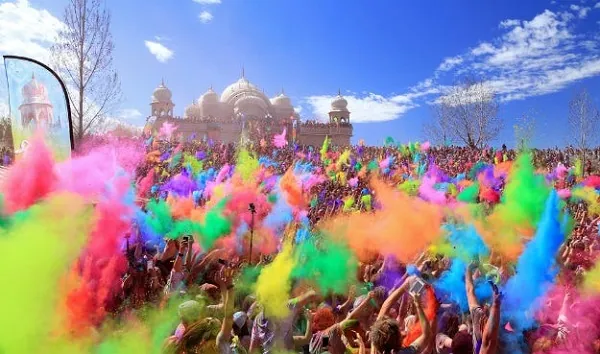
Significance: Victory of good over evil, the festival of love and fun.
Historic Origin: Celebrates in the Purnima (a full month ) of the Phagun month of the Hindu lunisolar calendar in March of the Gregorian Calendar.
How it is Celebrated: Playing with colours, performing the Lathmar ritual, Preparing Thandai and Bhang.
Where it is Celebrated: Vrindavan, Mathura, and Rajasthan attend Holi parties in Mumbai.
4. Ganeshotsav – 27th August 2025
Ganeshotsav is one of the most important festivals in India. It is celebrated for 10 days in Maharashtra to welcome the elephant-headed Lord Ganesh on the occasion of his birthday. Lord Ganesh is worshipped as the lord of success and destroyer of evil and obstacles. This festival is celebrated with great pomp and show in Maharashtra. Devotees bring Ganesh idols into their houses and worship the idol with Diyas and his favourite food, Modak. He is welcomed into the house with a lot of love and stays with the family for 10 days as a member of the family. Houses at this time were decorated with lights and Mandals. Huge Ganesh Idols can be seen worshipped on the pavements and in housing societies. One can feel the vibes of the festivals when places are brightly lit, and music and gatherings flood these Mandals with belief and love for the lord. Alibaug cha Raja in Mumbai is considered to be the most visited Ganesh Mandal in Mumbai. This Mandal is visited by a lot of Bollywood celebrities, politicians and businessmen, making it the most famous Ganesh Mandal in Mumbai. On the 10th day of the festival, Lord Ganesh’s immersion in water takes place with the belief that he will return the next year. Many documentaries about the preceding of these festivals have been shot. This festival surely has to be on the list when you visit India.
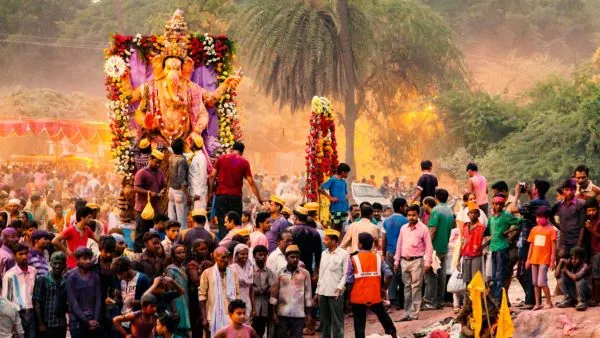
Significance: It’s Celebrated to mark the birthday of Lord Ganesha.
How it is celebrated: Chanting of Hindu Texts and Vedic Hymns, prayers in the temple, delicacies prepared are Modak, chakli, Puran Poli, last day procession of Idol of Lord Ganesh, Immersion of the Lord Ganesha Idol in the water on the last day.
Historic Origin: According to the Hindu lunisolar calendar, celebrated in the month of Bhadrapada on the 4th day of the first fortnight (Shukla Chaturthi), Bhadrapada is known as August or September of the Gregorian calendar
Where it is Celebrated: It is celebrated by Hindu communities all over the world, but the most famous place is in Maharashtra and Andhra Pradesh.
5. Navratri – September 22nd to 1st October 2025
Navratri, which means nine nights, is a festival devoted to Goddess Durga, the goddess of power and victory. Navratri is one of the popular festivals in India celebrated in Gujrat whereas it is known as Mahalaya in Kolkatta. The rich cultural essence of Gujrat can be felt in these nine days of Navratri. People fast during these nine days and perform Garba and Dandiya in the evenings on the tunes of Gujarati folk music and Bollywood songs after worshipping the Goddess. Women look gorgeous in the traditional outfits called Chaniya Choli, which have mirrors and bright-coloured threadwork. Meanwhile, men are seen wearing Chrono (cotton pants) and Kediyu ( shirt ). Gujrat is decorated all over, attracting tourists and visitors from all over.
Similarly, the Mahalaya in Kolkatta, which lasts for seven days, holds another outlook of worshipping Goddess Durga. Mahalaya is celebrated on the occasion of the victory of Goddess Durga over Buffalo king Mahishasura ( the demon ). Here, the Pandals ( where the goddess is worshipped) are decorated with lights and food. The landowner families have been carrying out the pujas for centuries, and the most famous ones are in Sovabazaar Raj Bhari and Rani Rashmoni Bari.
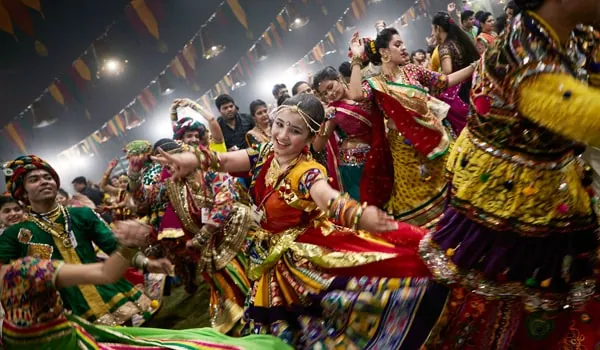
Significance: Celebrates the Goddess Durga in nine different ways.
How it is celebrated: During this 9 Day festival, people perform the Garba dance all 9 days, wear the traditional dress chaniya choli, and eat Gujarati cuisines like potato wafers, Sabudana khichdi, singoda ki kheer and Mandavi Paak.
Historic Origin: According to the Hindu lunisolar calendar, celebrated in the month of Ashwin on the first nine days, Ashwin is known as September or October of the Gregorian calendar.
Where it is Celebrated: Almost all parts of the country, but the popular places to celebrate this festival are Gujarat, Maharashtra, Kolkata and the metros.
6. Lohri – 13th January 2025
Meanwhile, Lohri in Punjab is celebrated by making a huge bonfire. People circle around the bonfire and offer rice or wheat in it. Lohri is the famous Punjab festival, which is primarily celebrated by Sikhs, Hindus, and the northern part of India on 13 January every year. It is celebrated the night before Makar Sankranti, also known as Maghi. The Festival of Lohri is celebrated to mark the winter season and to welcome the longer days.
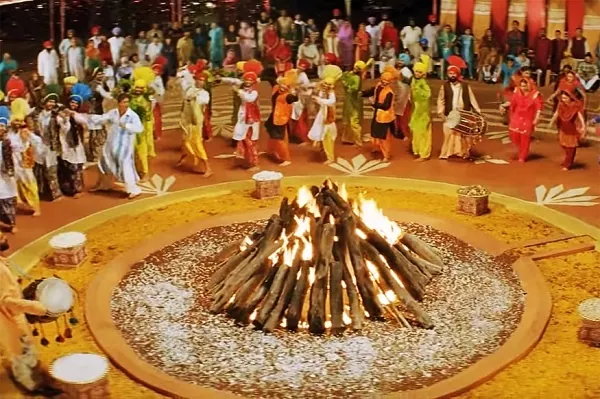
Significance: Celebrate to mark the end of winter days and the harvest of rabi crops and to thank the sun for the Good harvest.
How it is Celebrated: People wear new clothes, light the bonfire in the yard after sunset and circle around the bonfire, throwing jaggery, sesame seeds and rewaries in it and dancing and singing around the fire till the fire dies out.
Historic Origin: Marks an end to the winter solace, a Celebration to welcome longer days and a Transition from a negative to a positive time after Uttarayan.
Where it is Celebrated: Celebrated by Sikh communities, particularly across North India, especially in Punjab.
7. Pongal – 14th January to 17th January 2025
Pongal is a four-day festival in India celebrated in South India. Rice is boiled till it overflows from the pot. During this famous festival in India, people celebrate by drawing kolam, cooking Pongal dishes, and wearing traditional attire.
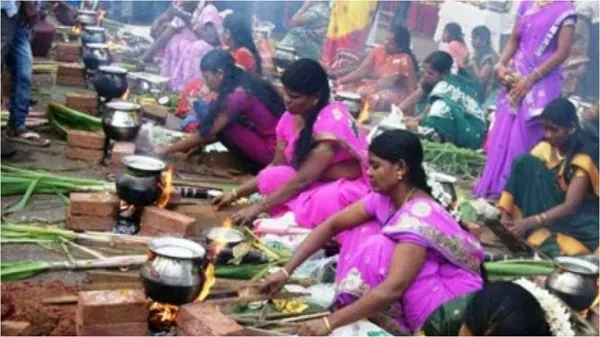
Significance: The 4-day-long Festival of Pongal is celebrated as the first harvest of the year and thanks the sun for the abundance of agriculture.
How it is Celebrated: The Festival is celebrated by wearing traditional costumes, decorating their homes with rangolis, lightning bonfire, dancing and singing around the bonfire.
Historic Origin: Marks an end to the winter solace and the first harvest of the year.
Where it is Celebrated: Primarily in Tamil Nadu, it is celebrated by the Tamils all over India.
8. Janmashtami – 16th August 2025
Janmashtami is another one of the famous Hindu festivals in India. Celebrated to mark the birth of Lord Krishna. Janmashtami in Mathura and Vrindavan are very popular. Praying and visiting temples, dancing, and singing bhajans (hymns) at midnight are part of the celebrations of the birth of Lord Krishna. Also, small children dress up like Lord Krishna.
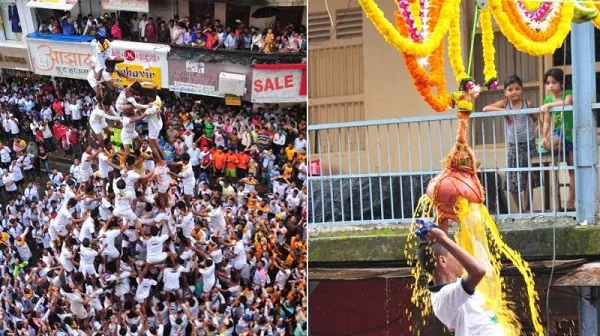
Significance: Celebrated as the birth anniversary of Lord Krishna.
How it is celebrated: People offer Puja and prayer in the temple and decorate beautiful jhakis, which depict the story of Lord Krishna, in the temple.
Historic Origin: According to the Hindu lunisolar calendar, Celebrated in the month of Bhadrapada on the 8th Day (known as Ashtami) of the Krishna Paksha (dark fortnight), corresponds to August or September of the Gregorian Calendar.
Where it is Celebrated: It is celebrated by the Hindu community, but the best place to celebrate this festival is Mathura and Vrindavan.
32 Some Other Popular Festivals in India
9. Kumbh Mela – January 13, 2025 to February 26, 2025
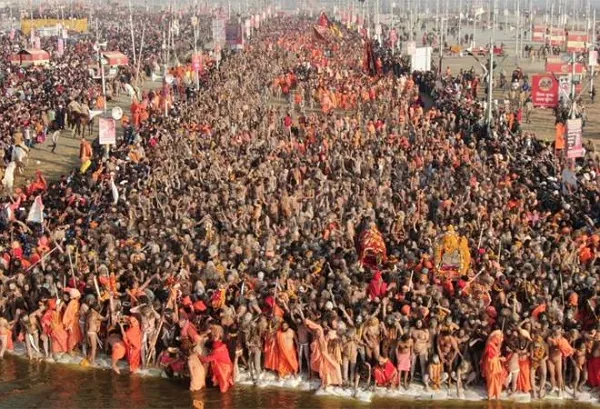
One of the religious festivals of India, Kumbh Mela is celebrated once every three years at the bank of four sacred rivers that are considered holy- at Haridwar on the Ganges river, at Ujjain on the Shipra river, at Nashik on the Godavari and at Prayagraj where three river combines Ganges, Jamuna, and Sarasvati.
Significance: It is celebrated every three years depending on the visionary situation of the moon, the sun, and Jupiter.
How it is Celebrated: The Festival is celebrated by dipping into the river and worshipping the Holy River. Kumbh Mela is one such famous festival in India that is visited by many tourists.
Where it is Celebrated: Haridwar, Ujjain, Nashik, and Prayagraj
10. Republic Day – 26th January
Republic Day is that Festival in India when patriotism in Citizen of India is at its peak. Republic Day was the day when the Constitution of India was introduced. Republic Day was first celebrated in 1950 when the Indian Constitution was introduced for the first time after the three years of Independence.
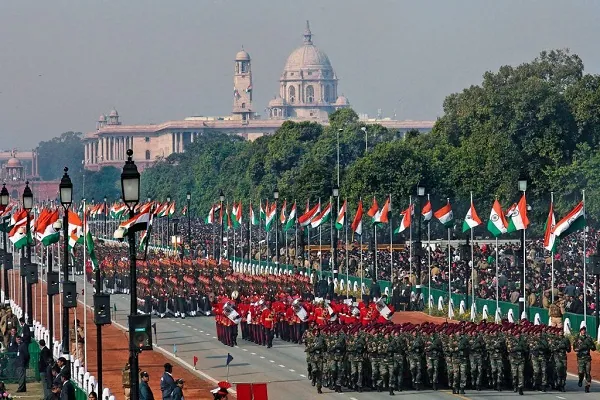
Significance: It was celebrated as the Day the Constitution of India was introduced.
How it is Celebrated: Every year, a Parade is held in Rashtrapati Bhavan Delhi, and that goes to Rajpath, India Gate, and Finally, Red Fort.
Where it is Celebrated: All parts of India
11. Basant Panchami – 2nd February 2025
Basant Panchami is one of the famous festivals in India. Celebrated every year in January or February, it is dedicated to Goddess Saraswati (also known as Goddess of Knowledge). This Festival is widely celebrated in Bihar, Assam, Odisha, West Bengal, Punjab, and Haryana.
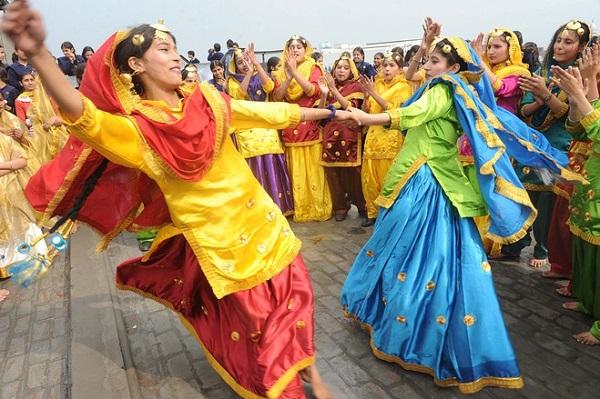
Significance: Basant Panchami marks the start of the Spring Season
How it is Celebrated: During this Festival in India, People make Yellow dishes like saffron rice and kadhi and sweets like ladoo, Besan Chakki, etc.
Historic Origin: According to the Hindu Calendar, it is celebrated every year on the 5th Day of Magha Month.
Where it is Celebrated: Indian States of Bihar, Assam, West Bengal, Odisha, Punjab, and Haryana
12. Maha Shivratri – 26th February 2025
This famous Hindu festival in India is dedicated to Lord Shiva. This Festival has enormous significance in Hindu mythology and, most importantly, for married and Unmarried women who fast to have marital bliss. It is said that whoever worships lord shiva on this Day will get rid of all their sins. To unfold the mystery of Lord Shiva, click here.
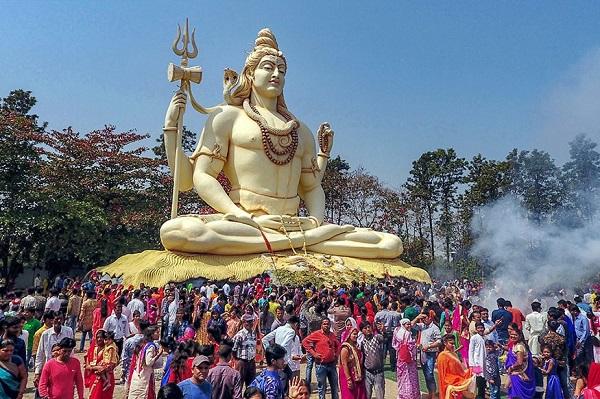
Significance: Devoted to Lord Shiva
How it is Celebrated: By Worshipping Lord Shiva
Historic Origin: It is celebrated in the month of Phalgun on the 14th Day of Dark Fortnight.
Where to Celebrate: Celebrated by Hindu Religion people
13. Carnival of Goa – 28th February to 4th March 2025
Carnival in Goa is almost 3-4 days long and brings much entertainment to the people. During Carnival time, you will feel Joy every year in Music, food, drinks, colours, drums, and fun. Float parades take place in the areas of Margao, Panjim, Vasco da Gama, and Mapusa. During your festive Goa trip, you can also visit various beaches in Goa that will give you an amazing time.
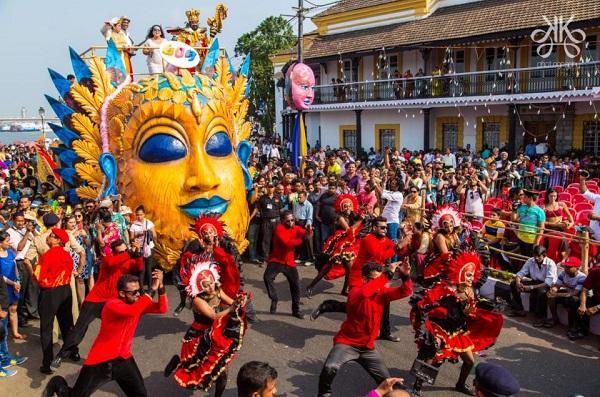
How it is Celebrated: During Carnival time, you will feel Joy every year in mad Music, food, drinks, colours, drums, and fun.
When: Celebrated in February Month every year
Where it is Celebrated: In Goa
14. Losar – 28th February to 2nd March 2025
Losar is one of the famous festivals in India celebrated in the Ladakh region. It is celebrated either at the end of January or at the beginning of February. The Metho is the main event that happens during the Festival of Losar, carried out by Ladakh people in which they carry flaming torches, moving from street to street and Chants prayers to chase away the evil spirits.
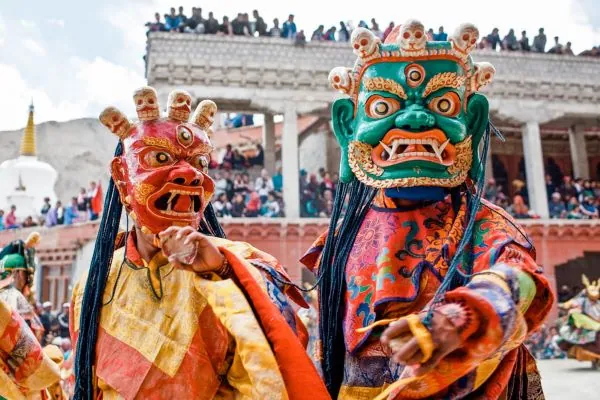
Significance: It is celebrated as the Tibetan New Year in Ladakh.
How it is Celebrated: During this Festival, people perform ancient rituals, dance, and Dramas.
Historic Origin: The Festival came into existence much before Buddhism was celebrated as a gesture of thanks to the gods. It usually falls each year on a different day in the Spring season.
Where it is Celebrated: Ladakh
15. Vasant Chaitra Navratri – 30th March to 7th April 2025
According to the Hindu Lunar Calendar, the Vasant Chaitra Navratri is a nine-day festival that marks the beginning of the new year. On Navratri, the first three days are dedicated to Maa Durga (known as the Goddess of energy), the next 3 to Maa Lakshmi (known as the Goddess of wealth), and the last 3 to Maa Saraswati (known as the Goddess of knowledge). The Nine Days Navratri Festival ends with the Ram Navami.
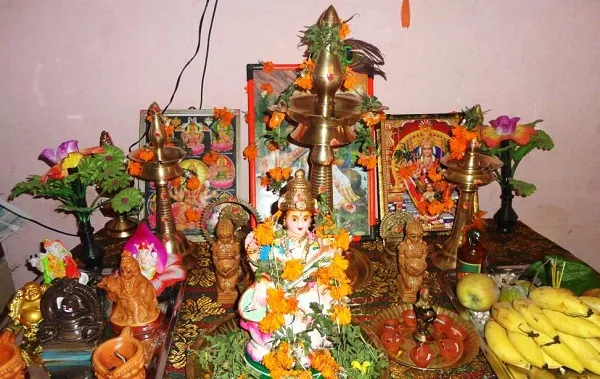
Significance: According to Hindu mythology, it is celebrated as the beginning of the new year, and it is dedicated to Maa Durga, Maa Lakshmi, and Maa Saraswati. It is believed that people who worship Goddesses during this time will get salvation and seek blessings for the future.
How it is Celebrated: People celebrate by fasting and worshipping the Goddess, and Prayers are held in temples, especially in Bengal.
Historic Origin: According to the Hindu lunar calendar, it is celebrated in the Chaitra, which falls in March or April in the Gregorian Calendar.
Where it is Celebrated: It is celebrated by the Hindus in all parts of the Country.
16. Mewar – 31st March to 2nd March 2025
Mewar is a Festival of India celebrated in Udaipur, Rajasthan. If you want to witness the Rajasthani Culture, you should not forget to attend this Festival in India. Mewar Festival is also known as the Gangur Festival. This festival has been celebrated for a very long time since the Sisodia Dynasty ruled India, and it has a vast history. There are many places to visit during your Udaipur trip that will mesmerize you with their beauty.
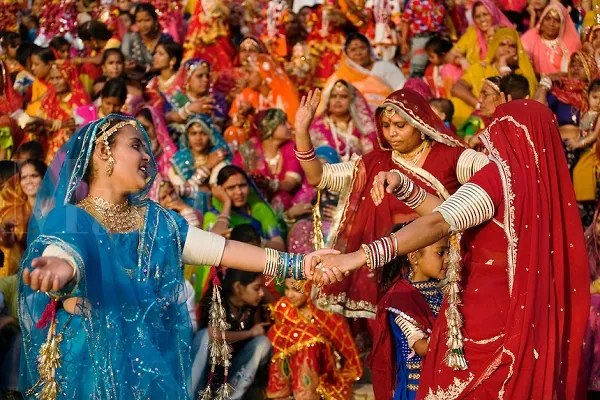
Significance: Celebrated to welcome the season of spring.
How it is Celebrated: This Festival is quite colourful, and women in Udaipur actively take part in the various ceremonies.
Where it is Celebrated: Udaipur, Rajasthan. (Attending the Mewar festival is one of the best things to do in Udaipur.)
Date: 27 March to 29 March 2025
17. Mahavir Jayanti – 10th April 2025
Mahavir Jayanti is a famous festival of India in which the Jain religion celebrates the birth of Lord Mahavir on this Day. The Maha Abhishek happened with the statue of Lord Mahavir when the deity of lord Mahavir bathed with milk and Flowers. Even a grand procession of Lord Mahavir was carried out in the streets on this Day.
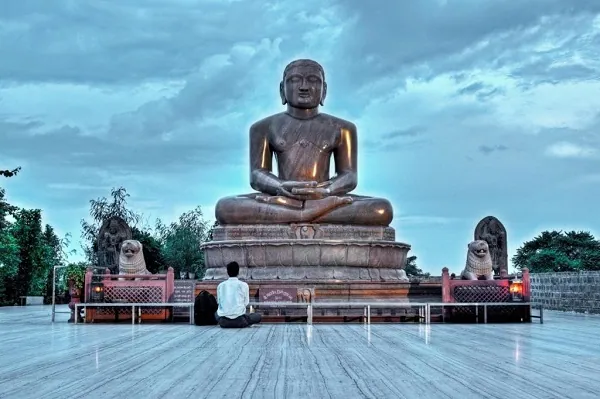
Significance: Celebrated as the birth anniversary of Lord Mahavir.
How to Celebrate: People fast and worship the Lord Mahavir. Rath Yatra is also carried out.
Historic Origin: The Hindu Calendar is celebrated on the 13th Day of Chaitra month, which is known as April month in the Gregorian Calendar.
Where it is Celebrated: Widely celebrated in the states of Gujarat and Rajasthan by the Jainism Community.
18. Easter – 20th April, 2025
Just like other festivals in India, Easter is a grand religious celebration celebrated with so much zeal and warmth in different parts of the Country. Celebrated during the spring season by various colourful decorations, plays, dances, plum cakes, and bright lanterns adorning the streets.
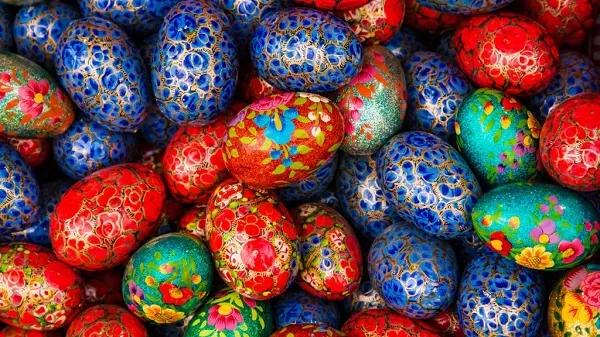
Significance: Resurrection of Lord Jesus
How to Celebrate: Celebrated by decorating Easter eggs, colourful decorations, doing folk songs and dances, cakes, chocolates, and lightning-bright lanterns adorning the streets
When: Celebrated on 31st March 2025, Sunday.
Where it is Celebrated: Goa, Pondicherry, and Kerala are the best places to celebrate Easter in India.
19. Baisakhi – 13th April 2025
Baisakhi is one of the famous festivals in India in April, celebrated as the Punjabi New Year and to welcome the harvest of the Rabi crop. This Festival has a religious significance in India as it marks the Day when the tenth guru of Sikhs, Guru Gobind Singh, back in 1699, laid out the foundation stone for the Panth Khalsa.
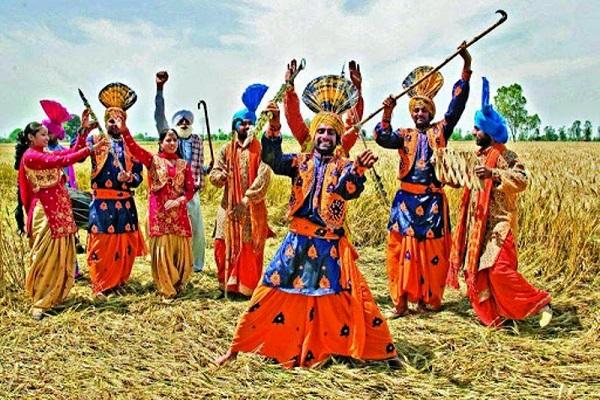
Significance: Baisakhi is the Punjabi new year celebrated to welcome the harvest season and the birth anniversary of the Khalsa.
How to Celebrate: People do folk dances like Bhangra and Giddha, fairs, decorations in houses and Gurudwara, Punjabi feasts, parades and Nagar Kirtan, and cooking of delicious foods.
Historic Origin: Baisakhi is celebrated on the First Day of Baisakh in the country and, according to the Gregorian Calendar, is celebrated in April.
Where it is Celebrated: It is celebrated by the Sikh community, primarily in Punjab.
20. Bihu – 15th April to 21st April 2025
Bihu is one of the famous festivals in India celebrated by the Assamese as the traditional new year. During this festival, men and women of Assam wear their traditional dress and perform their folk dance and music in the village field or the Courtyards.
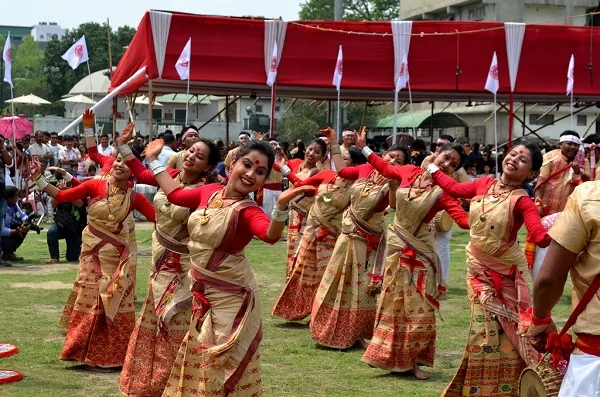
Significance: Bihu is the traditional Assamese New Year celebration.
How to Celebrate: People celebrate this Festival in India by doing the Bihu dance and preparing the local cuisine like coconut ladoo, til pitha, ghila pitha, and fish pitika
When: This seven-day festival starts on 14 April and ends on 20 April 2020.
Where it is Celebrated: Celebrated in Assam
21. Thrissur Pooram – 6th May, 2025
Among all Festivals in India, Thrissur Pooram is the famous Kerala festival, one of the best events to attend. This Famous Festival does not end before 36 hours. People from different parts of the Country gathered to celebrate this Festival. Fireworks and parasol displays are crucial parts of the city.

Significance: Thrissur Pooram Is celebrated to memorialize the establishment of 10 Temples around the Vadakkunnathan Temple.
How to Celebrate: Fireworks and Parasols are the Highlights of this festival.
Historic Origin: According to the Malayalam calendar, it is celebrated in Pooram Nakshatra in the Month of Medam, known as April or May in the Gregorian Calendar.
Where to Celebrate: It is Celebrated in Thrissur.
22. Buddha Jayanti – 12th May 2025
Buddha Jayanti is celebrated to memorialize the birth anniversary of Gautam Buddha; it is also known as Buddha Purnima or Vasak. Gautam Buddha introduced the philosophy of Buddhism to the world. To indulge in this festival, people wear white clothes and attend Buddhist teachings to follow tradition.
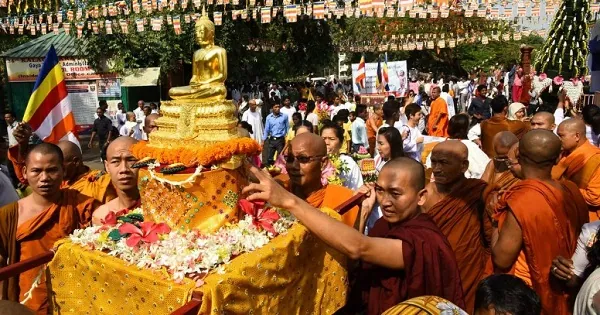
Significance: This Festival is celebrated as the birth anniversary of Gautama Buddha.
How to Celebrate: On this day, people wear white clothes and impart Buddha’s teachings.
Historic Origin: The Buddha’s birthday is based on Asian lunisolar Calendars and is primarily celebrated in the Baisakh month of the Buddhist Calendar. According to the Gregorian Calendar, it falls in May.
Where it is Celebrated: Darjeeling, Sikkim, Bodh Gaya, Kurseong, Arunachal Pradesh, and Maharashtra
23. Eid Ul Fitr – 30th March to 31st March 2025
Eid is one of the famous festivals in India that is celebrated by the Muslim community. On this day, people dress up in new clothes, attend the special community prayer in Majid, exchange sweets, visit friends and relatives, and make some mouth-watering Delicacies. Elders give the Idi to children in the form of money or gift.
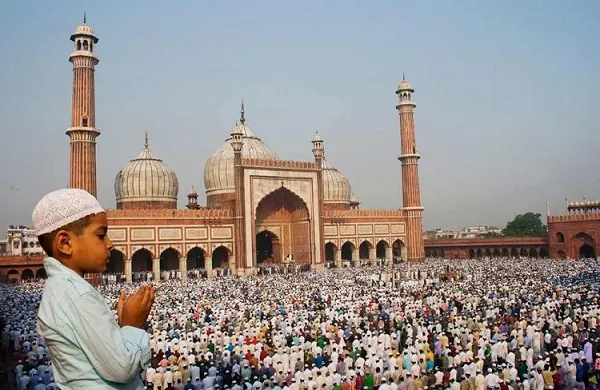
Significance: It Celebrates the end of fasting called Ramadan.
How to Celebrate: During this fest, people wear new clothes, exchange sweets, visit their friends and relatives, make some fantastic delicacies, and attend Masjid’s prayers.
Historic Origin: According to the Lunar Hijri Calendar, this Festival is celebrated on the 1st Day of Shawwal month, which corresponds to May or June month, according to the Gregorian Calendar.
Where it is Celebrated: Celebrated by Muslims all over the Country.
24. Rath Yatra Orissa – 27th June 2025
Rath Yatra is one of the famous religious festivals in India. In June, we celebrate to honour the Lord Jagannath. Idols of Lord Jagannath, Balabhadra, and the Goddess Subhadra are taken to the Streets on the Chariot for the procession.
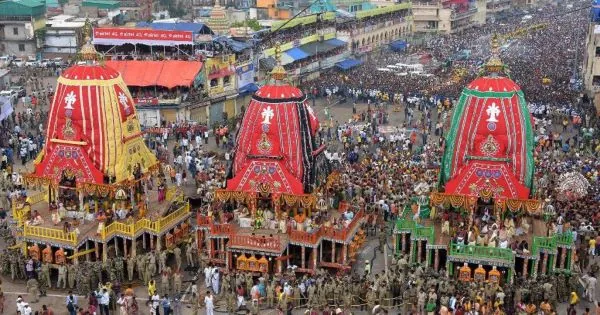
Significance: Celebrated to esteem Lord Jagannath.
Historic Origin: It was celebrated on the Second Day of Shukla paksha (waxing cycle of the moon) of Ashadha Maasa (3rd month in Lunar Calendar).
Where it is Celebrated: It is celebrated on the streets of Puri. Idols of God – Lord Jagannath Goddess Subhadra and Lord Bala Bhadra have been taken out in the Chariot.
25. Hemis – 5th to 6 July 2025
Hemis is one of the most famous two-day religious festivals in India, celebrated in Ladakh. During this Festival lots of people visit this place. It’s one of the unique times of festivals in India where priests do Cham dance on the traditional music of drums, cymbals, and trumpets played by the monks, dressing up in elaborate brocade outfits and masks.
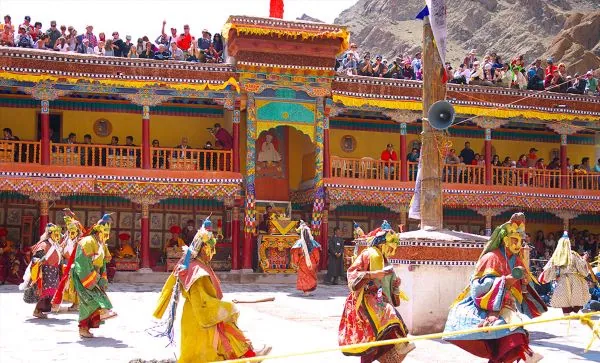
Significance: Celebrated as the birth anniversary of spiritual leader Padmasambhava.
How it is Celebrated: Priests do Cham dance on the traditional music of cymbals, drums, and trumpets played by the monks, dressing up in elaborate brocade outfits and masks
Historic Origin: Celebrated on the 10th day of the Tibetan lunar month, which corresponds to June or July of the Gregorian Calendar
Where it is Celebrated: Ladakh, Jammu & Kashmir
26. Raksha Bandhan – 9th August 2025
It is one of the most popular Hindu festivals in India, which signifies the bond of brother and sister. On this day, the sister ties the rakhi (a sacred thread) to her brother’s wrist and wishes for his well-being, and in return, the brother promises to protect the sister. Another festival that has a substantial similarity is Bhaidooj, which comes just after Diwali.
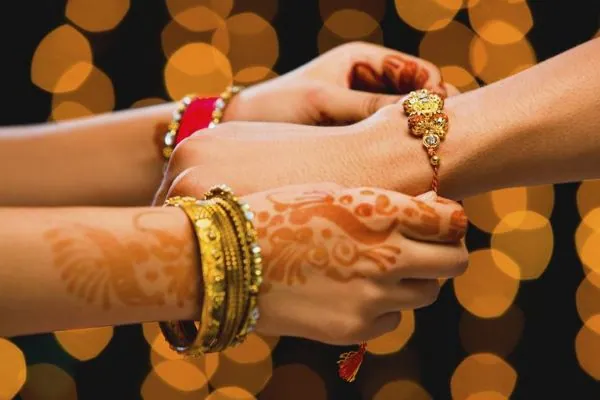
Significance: Celebrated to symbolise the bond of Brother and Sister.
How it is celebrated: On this day, the whole market is decked up with colourful rakhis, a sister ties the rakhi to their brother, and lots of mouth-watering dishes are prepared at home.
Historic Origin: It is celebrated in the Shravana month on the full moon day of the Hindu lunisolar calendar, which is also known as August in the Gregorian Calendar.
Where it is Celebrated: All parts of the Country, primarily in North, Central and West India
27. Independence Day – 15th August (Every Year)
Independence Day is one of the crucial national festivals in India, which marks the freedom of India attained from the Britishers on 15 August 1947. The Prime minister does the flag hosting in Red Fort, and 21 Gunshots are fired to give the salutation.
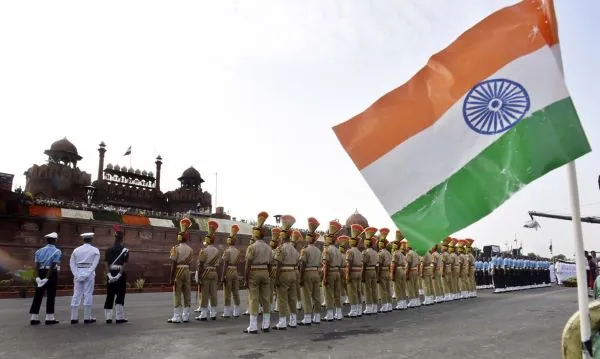
Significance: Celebrated to mark the freedom attained from British rule on 15 August 1947.
How it is celebrated: The Prime Minister of India hosts the flag and salutation, which is given through 21 gunshots in Delhi. There are many places to visit in Delhi that you can explore during your trip to the capital of India.
Where it is Celebrated: It is celebrated in all parts of the Country
28. Onam – 26th August to 5th September 2025
Onam is another one of the most famous festivals in India. During this day, people wear new traditional clothes, decorate houses with floral designs ( Locally known as Pookalam ), and cook onasadya, an elaborate meal of 13 Dishes. Lots of events happen during this festival, such as Vallamkali (snake boat race), Pulikali procession (artists dressed and painted like tigers and hunters), Kaikottikali (clap dance), and Kathakali Dance are held.
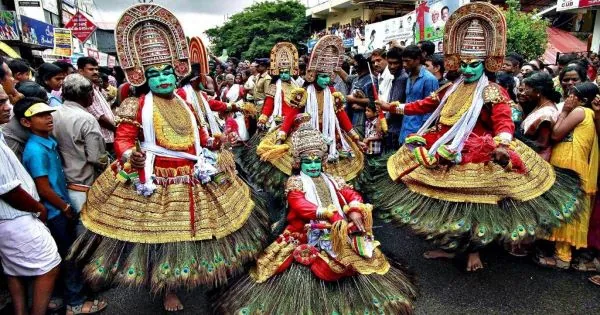
Significance: Celebrated to market the harvest festival and the homecoming of King Mahabali.
How it is celebrated: The Kaikottikali dance has been performed, the Snake Boat Race has been done, the Tug of War has been played, and the elephant procession.
Historic Origin: According to the Malayalam calendar, it is celebrated in the month of Chingam, which is also known as August or September in the Gregorian Calendar.
Where it is Celebrated: It is Celebrated in Kerala
29. Durga Puja – 28th september to 2nd October 2025

One of India’s most important Hindu festivals, Durga Puja, is celebrated during the Navratri and a day after Navratri. Bengalis celebrate this festival in India with so much energy by performing fast, worshipping the goddess Durga and performing cultural dances, songs, and dramas.
Significance: Celebrate to mark lord Rama’s summoning of Goddess Durga before going to war with the Ravana.
How it is celebrated: People do Pooja in front of Goddess Durga.
Historic Origin: According to the Hindu lunisolar calendar, it is celebrated on the 10th Day of Ashwin Shukla paksha, which corresponds to September or October of the Gregorian Calendar.
Where it is Celebrated: Kolkata is the Best Place to experience Durga Puja.
30. Dussehra – 2nd October 2025
Dussehra is also known as Vijayadashami and is popular among Hindus. This religious Festival of India is performed in different forms in the country. Ramlila (A play on the life of Lord Ram) is held everywhere for 10 Days. In Kullu, it is celebrated for ten days, welcoming their mountain deities in their valley; in Mussorie, a colourful procession is taken out; it looks like a bride and atmosphere filled with Music and Drums.
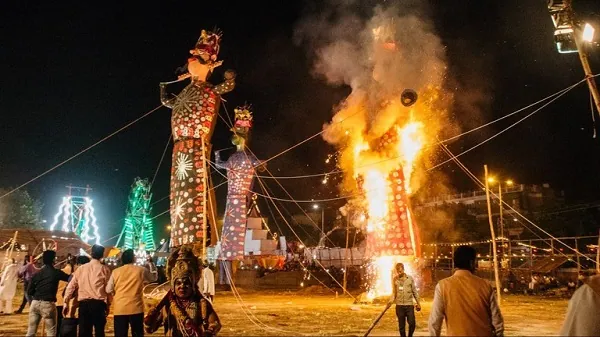
Significance: Celebrated to mark the good over evil, when the lord ram killed the demon king Ravana.
How it is celebrated: In public pandals, people perform Ram-Leela acts. A big event has happened: the burning of Ravana, Meghnath, and Kumbhkaran effigies.
According to the Hindu lunisolar calendar, it is celebrated on the 10th Day of Ashwin Shukla paksha, which corresponds to September or October of the Gregorian Calendar.
Where it is Celebrated: It is Celebrated in Pan India.
31. Gurpurab – 5th November 2025
Gurpurab is among the crucial Sikh Festivals in India. Assemblies on the teachings and lives of gurus are conducted, and the Gurudwaras organize langars (Community meals). People decorate their homes with beautiful lightning lamps and candles and burst crackers to celebrate the Gurpurab.
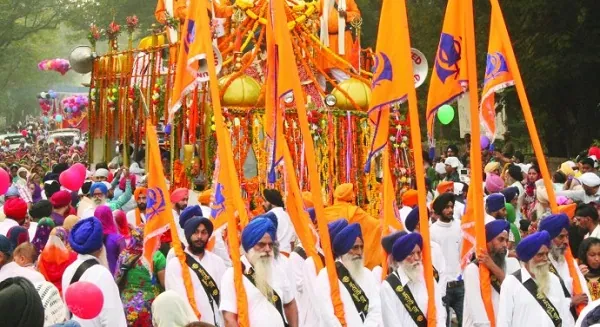
Significance: Celebrate to mark the anniversary of ten Sikh gurus.
How it is celebrated: The Soulful Gurbani in the Gurudwaras, the Karah Prasad and
the Langar, people wear new clothes and visit the gurdwara to offer prayers.
Historic Origin: Accord to the Hindu lunisolar calendar, the full moon day in the month of Kartik, which corresponds to November of the Gregorian Calendar
Where it is Celebrated: Celebrated in Punjab, especially by the Sikh Community.
32. Hornbill Festival – 1st December to 10th December 2025
Hornbill Festival is celebrated in Nagaland, India, every year from 1 to 10 December. It is also known as Festivals of festivals. During this festival, various activities were done, like painting, horse riding, Crafting, a flower show, a chilli eating challenge, herbal medicine sales, sports, games, performances, and much more.
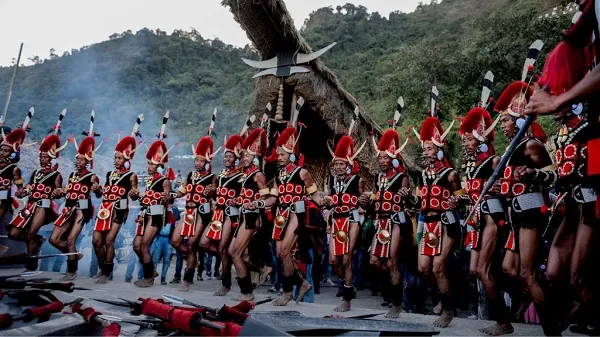
Significance: It is celebrated in Nagaland to promote intercultural harmony between the different tribes.
How it is celebrated: There are numerous activities during this event: painting, horse riding, Craft space, flower show, chilli eating challenge, herbal medicine sales, sports, games, performances, and much more.
Where it is Celebrated: It is Celebrated in Nagaland.
33. Christmas – 25th December (Every Year)
This Festival is celebrated across India to mark the birth anniversary of Jesus Christ. Everyone waits for this day, especially the children, for the special gift from Santa. All the churches and houses are lit up to celebrate this beautiful Festival in India.
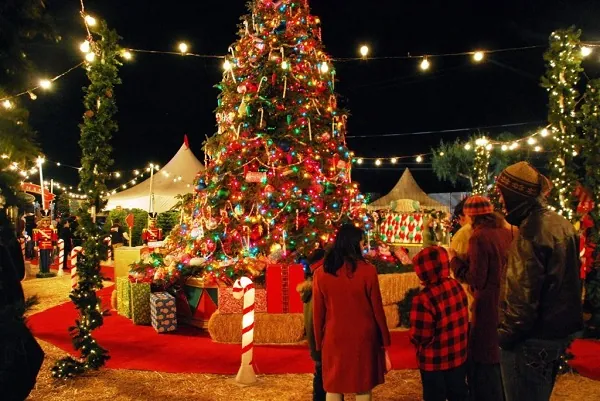
Significance: Celebrates to mark the birth of Jesus Christ.
How it is celebrated: Decorate the Christmas tree, wear new clothes, make mouth-watering dishes, visit the Church to offer prayers, and visit the houses of relatives and neighbours to exchange sweets.
Where it is Celebrated: The Christian Community celebrates the Festival in all parts of India. But the popular places to visit during this time are Goa, Pondicherry, and Kerala. During your Kerala tour, there are many places to visit in Kerala.
34. Ugadi – 30th March 2025
Ugadi is a famous festival in India celebrated in the Andhra Pradesh, Karnataka, and Telangana states. It celebrates by making rangolis on the floor and cooking the delicacies, decorating the doors with flowers and leaves named Torana, exchanging gifts, and sharing the food.
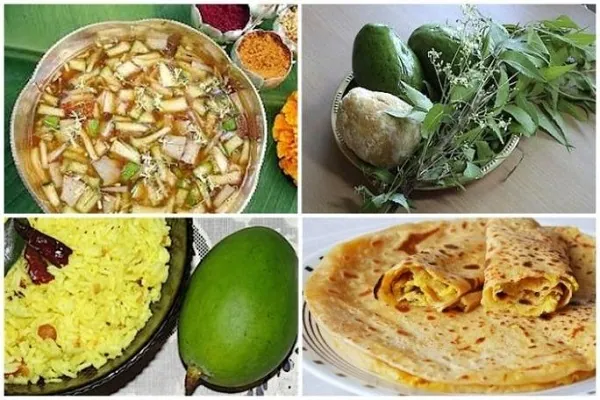
Significance: It’s a harvest festival considered auspicious for starting new work.
How it is celebrated: Famous Ugadi delicacies made by women like Pulihora, bobbatlu, and Ugadi Pachadi, prepared with raw mango, neem, tamarind, and Jaggery.
Historic Origin: On the First Day of Chaitra month, according to the Hindu lunisolar calendar.
Where it is Celebrated: Karnataka and Andhra Pradesh
35. Chhath Puja – 25th to 28th October 2025
It’s a four-day-long festival dedicated to the sun and one of India’s most famous festivals. Many people take a bath in the holy Ganges and fast during the Pooja. The devotees thank god for life and pray for the well-being of their family.
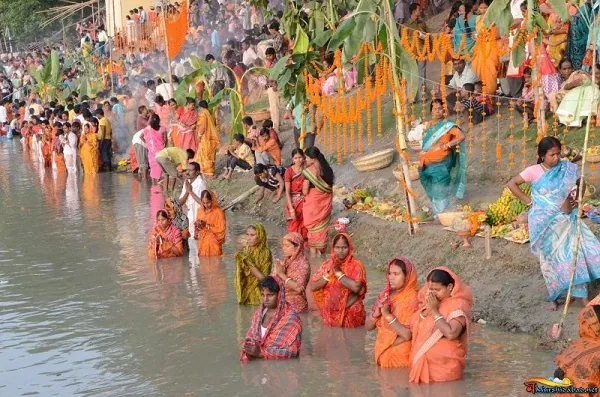
Significance:- Chhath Puja is Dedicated to the sun god.
How it is celebrated:- Devotees do fast and Pooja and perform Pooja.
Historic Origin:- According to the Hindu lunisolar calendar, it is celebrated on the sixth day of Kartika, which corresponds to October or November on the Gregorian Calendar.
Where it is Celebrated: It is Celebrated in Bihar.
36. Govardhan Puja – 22nd October 2025
Goverdhan Puja is the Popular Hindu festival in India, also known as Annakut Puja. Govardhan Puja is celebrated to acknowledge the Day when Lord Krishna defeated Lord Indra, the god of thunder and rain. This Day is celebrated in different parts of India in various forms, like in Maharashtra. It is celebrated as Bali Pratipada, while in the Gujarat state, it is celebrated as Gujarati New Year Day.
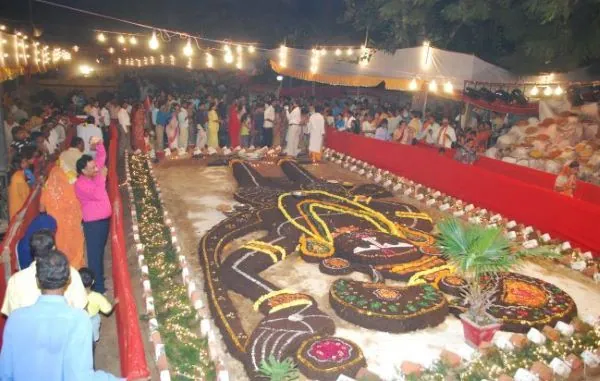
Significance: Goverdhan Puja is Celebrated as the Day when Lord Krishna defeated the god of rain and thunder named Lord Indra.
How it is celebrated: On this Day, food of rice, wheat, and leafy vegetables is made and offered to Lord Krishna.
Historic Origin: Falls the Day after Diwali in Kartik month according to the Hindu lunisolar calendar.
Where it is Celebrated: All over India
37. Gudi Padwa – 30th March, 2025
Gudi Padwa is a grand harvest festival in India celebrated in Maharashtra, making the opening of an auspicious new year. People make rangoli designs on the gate and decorate it with flowers. People visit family and friends, and women make sweets like Sunth Paak, Shrikhand, and Puran Poli.
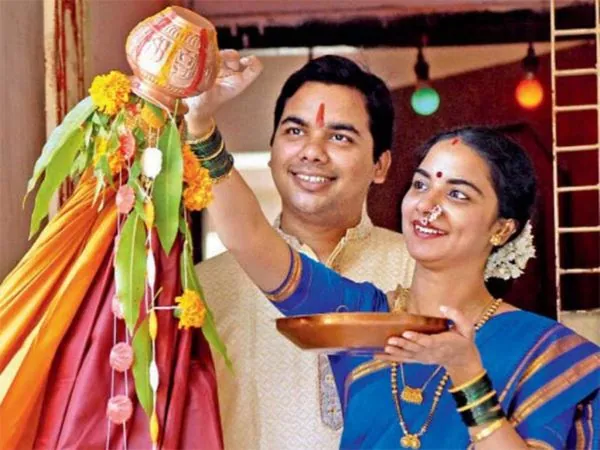
Significance:- On this day, people worship Lord Vishnu.
How it is Celebrated: The people of Maharashtra make Gudi (Bamboo dolls) using mango and neem leaves and hang them on the entrance.
Where it is Celebrated: Maharashtra
38. Camel Festival – 30th october to 5th November
The Camel Festival is one of the most exciting festivals in India, which is celebrated every year in Pushkar, Rajasthan. Camel Festival is the Festival that one should witness when someone is looking for traditional-style Indian celebrations.
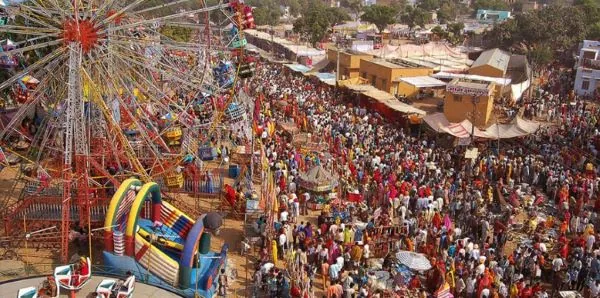
Significance: The Camel Festival was celebrated to mark the day for camel and cattle traders to do business.
How it is Celebrated:- On this Day, many cattle and camel traders get together to do business.
Where it is Celebrated: Pushkar, Rajasthan
39. Teej Festival – 26th August 2025
Teej Festival is a very famous festival in India, especially in the northern part. During this festival, Goddess Parvati is worshipped, women wear new dresses, and special delicacies are cooked. A grand Procession has been taken out of Goddess Parvati on the streets. Jaipur is the best place to witness the Teej festival. During your Jaipur festive tour, you can also visit many places to visit in Jaipur.
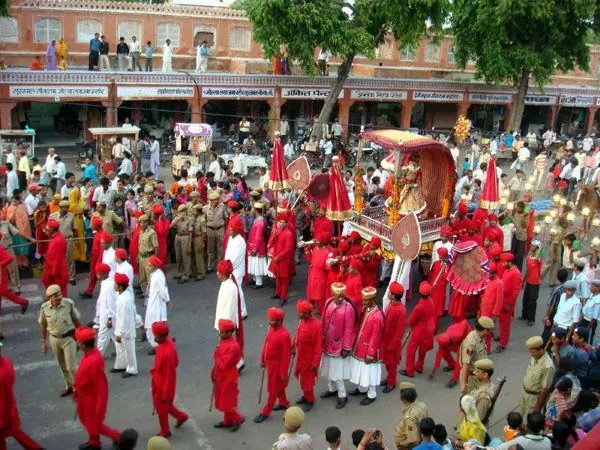
Significance: Teej Festival is celebrated to welcome the monsoon season.
How it is celebrated: Wearing new dresses, worshipping Goddess Parvati, even a grand procession was taken out on the streets, and a delicacy by women has been prepared.
Historic Origin: Haryali Teej: Third Day of the bright half of the lunar month of Shravana. Kajari Teej is celebrated in the month of Bhadrapada on the third day of the dark fortnight. Hartalika Teej is celebrated on the third day of the bright half of Bhadrapada.
Where it is Celebrated: It is Celebrated in the northern part of India; the best place to see the teej festival is Jaipur during the Golden Triangle Tour India.
If you Plan a trip to visit Jaipur, LIH provides the best Rajasthan tour packages for travelling in Jaipur and all over Rajasthan for fun with family and friends.
40. Hampi Festival – 28th February to 2nd March
Hampi Festival, also known as the Festival of Victory, is among the famous festivals of India. Also known as the Vijaya festival, this is one of the largest celebrations for Hampi, a historic town in south India since the time of the ruler of Vijayanagara.
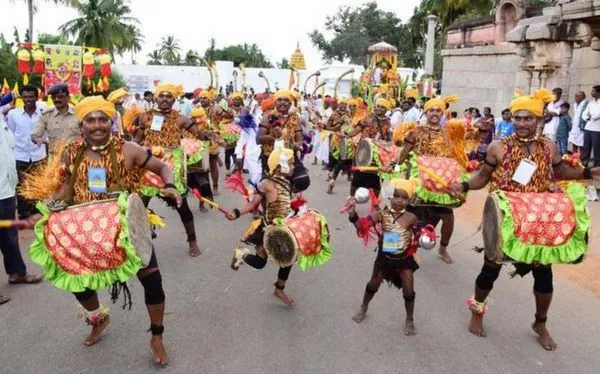
How it is celebrated:- The Hampi Festival is Celebrated with special performances like music, dance and puppet shows. There are fireworks and decorated pomp processions done during the festival.
Where it is Celebrated: Karnataka, India
FAQs on Festivals in India
Q.1 How many Festivals are there in India?
Ans: There are numerous festivals in India; commonly, you may find approximately 50 to 60 festivals in India.
Q.2 Which religion has the most festivals in India?
Ans: Hindus and Roman Catholics have the most festivals as compared to other religions.
Q.3 Which Country has the most Festivals?
Ans: India has the most festivals as compared to other states.
Q.4 Which city is called as the City of Festivals in India?
Ans: Madurai is the city of festivals in India and is also known as the cultural capital of Tamil Nadu.
Q.5 Which are the biggest and most famous festivals in India?
Ans: The Biggest and most famous Festival in India are:-
- Diwali
- Holi
- Makar Sakranti/ Lohri/ Pongal
- Navaratri/Durga Pooja
- Ganeshotsav
- Ramadan
- Janmashtami
Q.6 What are the famous festivals in North India?
Ans: The Famous Festival in North India are:-
- Baisakhi and Lohri in Punjab
- Hemis in Ladakh and Jammu & Kashmir
- Bihu in Assam
- Makar Sankranti in North India
Some other famous North India festivals are – Teej, Janmashtami, Kumbh Mela, Govardhan Pooja, Navratri, etc.
Q.7 What are the famous festivals in South India?
Ans: Onam and Pongal are famous festivals in South India; the Nehru trophy race in Kerala, Hampi Festival, Thrissur Pooram, Rath Yatra Orissa, and Ugadi are some famous festivals in South India.
